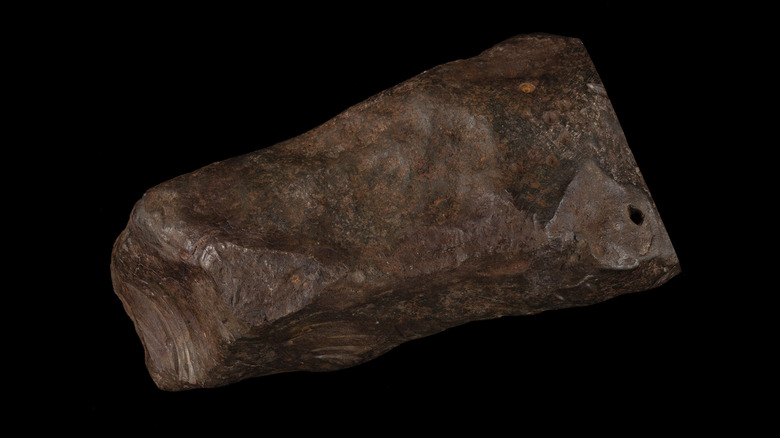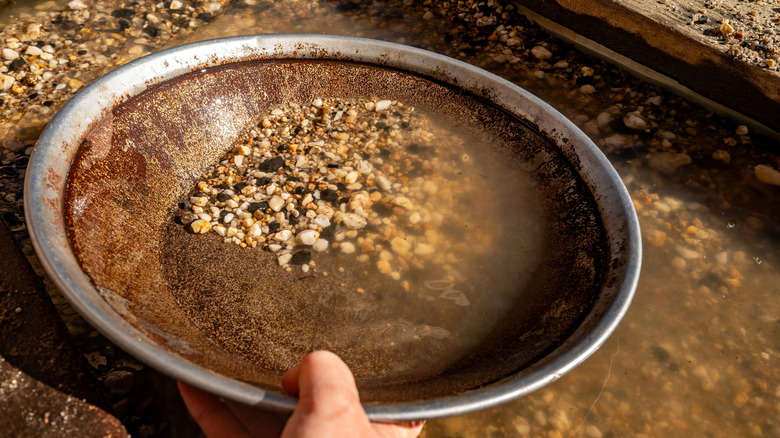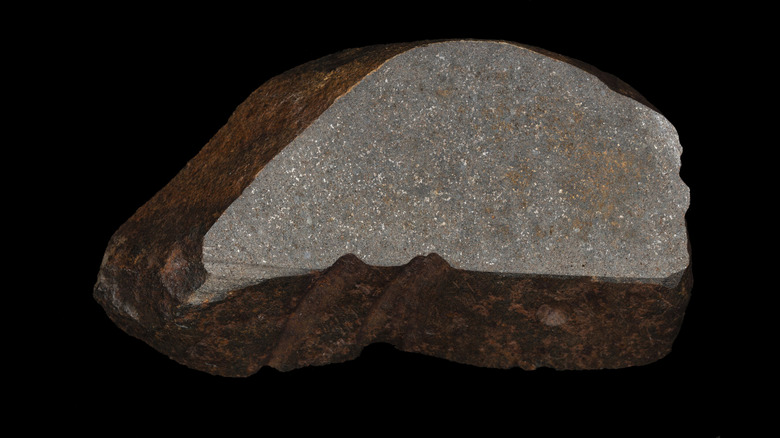The Unassuming Rock That Was Actually A Priceless Scientific Find
There have been many surprising scientific revelations in recent years. There was the impressive scientific discovery once mistaken for a shipwreck and the time scientists made a surprising discovery about where life began. But it's always thrilling when members of the public stumble upon priceless artifacts, especially when they also have significant scientific value.
We've all heard stories of everyday people uncovering precious treasures. In 2024, a father and son came across 17 rare historic coins while metal detecting in Poland, and in 2019 an amateur metal detectorist unearthed a gold pendant that commemorated Henry VIII's first marriage. There are countless similar stories about incredible discoveries by amateurs, but few of them also happen to include a prehistoric scientific marvel, as was the case with Australian prospector David Hole.
In 2015, Hole came across a heavy rock with a reddish coloration resting in yellow clay while out on a gold prospecting trip. But there was no way Hole could have known at the time that his eye-catching discovery was actually a 4.6-billion-year-old meteorite that was more rare than gold itself.
Gold prospecting uncovered a relic from the dawn of our solar system
David Hole first found his mysterious rock while out on a 2015 metal detecting trip in Maryborough Regional Park near Melbourne. So unusual was this discovery, that he took it home and was determined to break into it, expecting it to contain some sort of gold deposit. It was a reasonable assumption, seeing as Maryborough is part of what's known as the Central Goldfields, an area in Victoria that for more than 150 years has been known as one of the most gold-rich areas in Australia.As it turned out, Hole's find was not gold. In fact, it wasn't even of this planet, but it would take the prospector some time to figure that out.
After trying and failing to crack the unusually heavy rock open with a rock saw, angle grinder, drill, and sledgehammer, Hole tried acid to see if that could penetrate the stubbornly resilient artifact. Alas, it was no more effective than the range of tools he'd already tried, and so, suspecting he had something truly unique, he decided to take the rock, which weighed roughly 37 pounds, to Melbourne Museum, where geologists Dermot Henry and Bill Birch took a closer look.
It was here that Hole finally found out what he'd stumbled upon in that Maryborough field: a 4.6 billion-year-old meteorite which contained preserved droplets of silicate minerals formed from the gas cloud that gave rise to our own solar system.
The Maryborough meteorite's 4.6-billion-year journey to Earth
When David Hole brought his unusual rock to Melbourne Museum, Dermot Henry used a super-hard diamond saw to reveal the incredible contents within. As Henry put it to The Sydney Morning Herald, "You're looking right back to the formation of the solar system here." The meteorite was packed with dense forms of iron and nickel, explaining its unusual heft, and was identified as H5 chondrite — a major type of meteorite.
Before our planet even formed, chondrite chunks orbited the Sun, with gravity ultimately bringing these rocks together to form Earth and other rocky planets. But that raises the question of how this particular lump of chondrite ended up laying in an Australian field in 2015. According to Henry and Birch's best guesses, the Maryborough meteorite, as it came to be known, was likely a lump of chondrite that ended up in the asteroid belt between Mars and Jupiter. A collision between two of these rocks probably sent a shard hurtling towards Earth, where it eventually landed sometime within the last 1000 years or so, based on carbon dating tests.
Henry, Birch, and their colleague Andrew Tomkins published their findings about the Maryborough meteorite in a 2019 paper in Proceedings of the Royal Society of Victoria, where they note it is the second-largest single chondritic mass ever found in Victoria.


